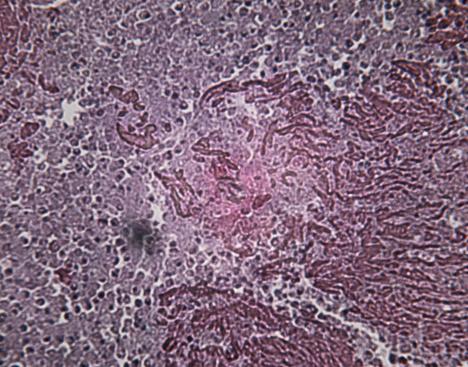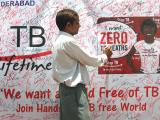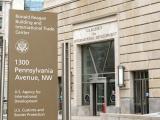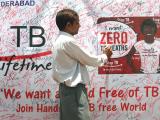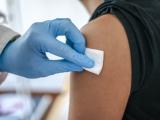Tuberculosis (TB) incidence in the United States continued its 20-year decline last year, dropping 4.2% overall, but a slower decline in foreign-born residents meant that they accounted for a greater share of all cases, the Centers for Disease Control and Prevention (CDC) reported today.
The CDC also reported that new TB screening guidelines for immigrants to the United States resulted in the identification and treatment of more than 600 cases in 2012 before the immigrants left their home countries.
In related developments, the World Health Organization (WHO) estimated that fewer than 25% of cases of multidrug-resistant TB (MDR-TB) that occurred in 2012 were diagnosed, but it said a program to improve diagnoses of the illness is making made headway in 27 countries.
The reports were issued in advance of World TB Day on Mar 24, the date in 1882 when Dr. Robert Koch announced the discovery of Mycobacterium tuberculosis.
US incidence drops to 3 cases per 100,000
The CDC, writing in Morbidity and Mortality Weekly Report (MMWR), said 9,588 new TB cases were reported by health departments in the United States in 2013, for an incidence of 3.0 cases per 100,000 population. That's a 4.2% decrease from the 3.2 per 100,000 in 2012. By comparison, Europe's TB incidence in 2012 was 13.5 per 100,000, according to a news story in today's Eurosurveillance.
The CDC said there were 3,377 cases in native-born residents, for an incidence of 1.2 per 100,000, which was down 8.4% from the year before. Foreign-born residents accounted for 6,172 cases, or 64.6% of the total. That amounted to 15.6 cases per 100,000, which was down 2.1% from 2012, yet it was 13 times higher than the incidence in US-born people.
Just over 54% of foreign-born residents who had TB hailed from five countries: Mexico, the Philippines, India, Vietnam, and China, the CDC reported. It said the disproportionate share of cases among the foreign-born has been attributed to reactivation of previously acquired TB infections, with the numbers reflecting the incidence in immigrants' countries of origin.
Four states—California, Texas, New York, and Florida—accounted for 51.3% of all TB cases, up from 49.9% in 2012, the report said. The states have high numbers of foreign-born residents, ranging from 16% to 26% of the population, and they are among the 15 states with the highest rates of homelessness, the agency said.
Regarding TB cases by racial and ethnic groups, the CDC said Asians had the highest incidence, 25.9 times that of whites, while the incidence among US-born blacks was 6.2 times the incidence in whites.
The CDC observed that a TB goal set in 1989—to reduce TB incidence to 1.0 case per 100,000—remains elusive.
Screening guidelines called effective
In another MMWR article, the CDC estimated that revised TB screening guidelines set in 2007 for people wishing to move to the United States have saved taxpayers $15 million through detection of cases before immigrants and refugees left their home countries.
Before 2007, people applying for a US visa received a chest x-ray and a sputum smear test to identify active TB, and those who tested positive were treated before arriving in the United States, the article explains.
In 2007 the CDC began implementing a requirement for a much more sensitive sputum culture test to confirm TB and permit treatment. The requirement now applies in all countries with US-bound immigrants.
In 2012, overseas physicians identified more than 1,100 TB cases in US visa applicants. About 674 cases, including 14 MDR-TB cases, would not previously have been identified and treated before the individuals moved to the United States, the CDC said. The agency said the $15 million saved is a rough estimate based on the cost of treating TB cases in the United States.
"This program has been one of the largest and most successful interventions in US tuberculosis control during the past decade," Martin Cetron, MD, director of the CDC’s Division of Global Migration and Quarantine, said in a press release. "In addition to creating major savings in health care costs, the program ensures that immigrants and refugees get prompt care and correct treatment, which is vital to their health, the health of their loved ones, and the US communities where they settle."
The 2007 guidelines also require the use of directly observed therapy (DOT), the "gold standard" for TB treatment, the CDC said.
WHO praises MDR-TB diagnosis program
In other TB news, the WHO said today that 27 countries that participate in a program called EXPAND TB (Expanding Access to New Diagnostics for TB) are making "promising progress" in detecting MDR-TB.
In a press release, the agency said almost half a million people contracted MDR-TB in 2012, but fewer than one in four cases was diagnosed, mainly because of unavailability of quality diagnostic services.
EXPAND-TB was launched in 2009 with $87 million from UNITAID with the aim of improving TB diagnosis in 27 low- and middle-income countries, which together bear 40% of the estimated global burden of MDR-TB, the WHO said. UNITAID is a global health initiative that uses taxes on airline tickets to provide funds for HIV, TB, and malaria drugs and diagnostics.
More than 30% of the MDR-TB cases detected globally in 2012 were in EXPAND-TB countries, the agency said, calling the results impressive. It said 36,000 cases were detected in those countries, triple the number in 2009.
The agency also said 92 laboratories in the 27 countries were fully operational by the end of 2013.
"The project has enabled more patients to be treated with quality-assured second-line TB medicines," the WHO stated. "Through that demand, the project has helped to reduce the price of individual medicines and MDR-TB treatment regimens by one third. Prices have also dropped for diagnostic commodities."
MDR-TB cases costly
In yet another development, a report in the CDC journal Emerging Infectious Diseases suggested that the cost of treating MDR-TB may be about eight times the cost of treating non-MDR-TB.
In the study, CDC and state and local health department researchers examined the records of a sample of MDR-TB cases reported in California, Texas, and New York City from 2005 through 2007. The 135 reported cases included 5 cases of extensively drug-resistant TB (XDR-TB).
"Nearly three-quarters of patients were hospitalized, 78% completed treatment, and 9% died during treatment," the report says. "Direct costs, mostly covered by the public sector, averaged $134,000 per MDR TB and $430,000 per XDR TB patient; in comparison, estimated cost per non-MDR TB patient is $17,000. Drug resistance was extensive, care was complex, treatment completion rates were high, and treatment was expensive."
CDC. Trends in tuberculosis—United States, 2013. MMWR 2014 Mar 21;63(11):229-33 [Full text]
CDC. Implementation of new TB screening requirements for U.S.-bound immigrants and refugees—2007-2014. MMWR 2014 Mar 21;63(11):234-6 [Full text]
See also:
Mar 20 CDC press release on TB screening program
Mar 20 WHO statement on EXPAND-TB program
Mar 20 Eurosurveillance news story noting TB incidence in Europe
Mar 20 Emerg Infect Dis report
